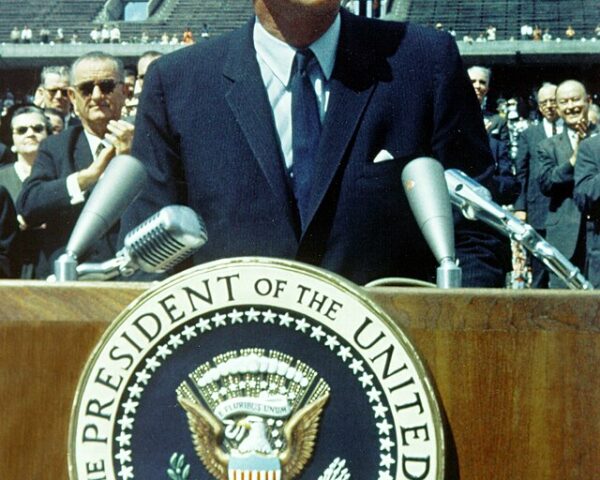On July 10, 1962, AT&T changed the way the world shares information, launching Telstar 1, the first active communications satellite. The launch highly-anticipated launch captivated people across the globe. As the Delta rocket thundered into the sky from Cape Canaveral, Florida, everyone held their breath. The culmination of years of research, engineering, and collaboration between Bell Telephone Laboratories and NASA, the satellite served as a shining beacon of American innovation.
The first experimental communications satellite was made in 1960 by John Robinson Pierce of Bell Telephone Laboratories in the United States, writes Brittanica. He “seized the opportunity presented by the planned launching of Echo 1, an aluminum-coated balloon satellite. At Pierce’s instigation, Echo was equipped to receive telephone signals and reflect them back to Earth.
Telstar, a far more sophisticated conception, was designed to amplify a signal received from the ground and to relay it back to another ground station. Weighing only 170 pounds, it was powered by nickel-cadmium batteries, recharged by 3,600 solar cells, and contained more than 1,000 transistors. Its heart was a traveling-wave tube capable on its own of amplifying signals 10,000 times, and far more with the aid of other components.”
“Although operational for only a few months and relaying television signals of a brief duration, Telstar immediately captured the imagination of the world,” according to NASA. “The first images, those of President John F. Kennedy and of singer Yves Montand from France, along with clips of sporting events, images of the American flag waving in the breeze and a still image of Mount Rushmore, were precursors of the global communications that today are mostly taken for granted.
Telstar operated in a low-Earth orbit and was tracked by the ground stations in Maine and France. Each ground station had a large microwave antenna mounted on bearings, to permit tracking the satellite during the approximately half-hour period of each orbit when it was overhead. The signals from Telstar were received and amplified by a low-noise “maser” (Microwave Amplification by Stimulated Emission of Radiation), the predecessor of the modern laser. After demonstrating the feasibility of the concept, subsequent communications satellites adopted a much higher orbit, at 22,300 miles above the Earth, at which the satellite’s speed matched the Earth’s rotation and thus appeared fixed in the sky. During the course of its operational lifespan, Telstar 1 facilitated over 400 telephone, telegraph, facsimile and television transmissions. It operated until November 1962, when its on-board electronics failed due to the effects of radiation.”
As Telstar 1 settled into its orbit, it symbolized a paradigm shift in global communication. Its revolutionary technology enabled the transmission of live television signals across the Atlantic Ocean, bridging the gap between continents like never before. The launch of Telstar 1 marked a pivotal moment in human history, ushering in an era of instantaneous global connectivity and paving the way for a world where distance would no longer hinder the exchange of information and ideas. It was a testament to human ingenuity, pushing the boundaries of what was thought possible and forever altering the course of telecommunications.
We still see Telstar 1’s impact today. It holds the distinction of being the first commercial payload in space. The satellite’s significance as a pioneering piece of technology led to its inclusion in the collection of the Smithsonian National Air and Space Museum. It stands as a testament to the collaboration between government agencies, private industry, and the scientific community in shaping the early days of space exploration and satellite communication. Telstar’s legacy lives on as a symbol of the transformative power of technology and its impact on global connectivity.






